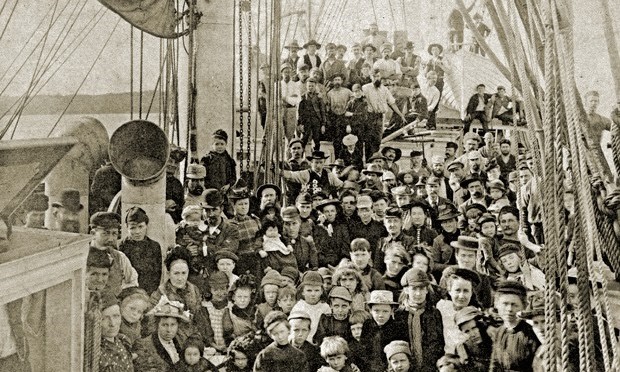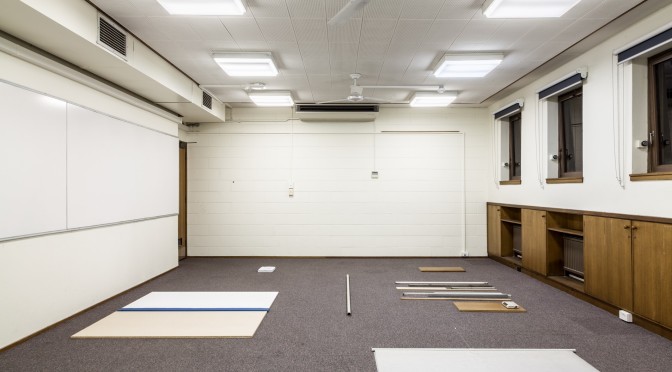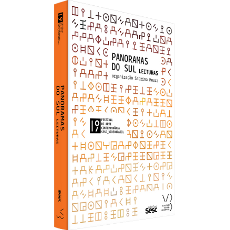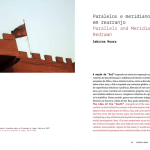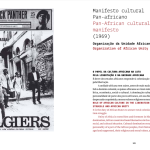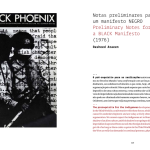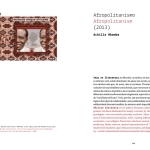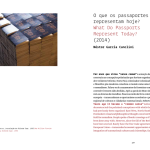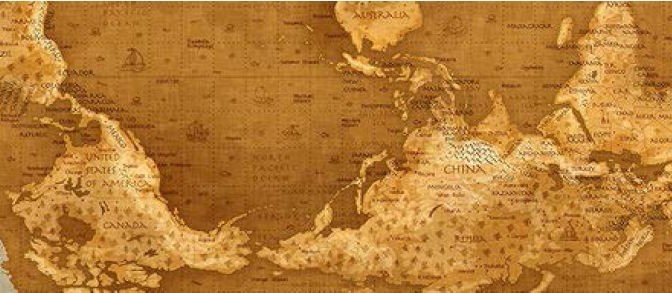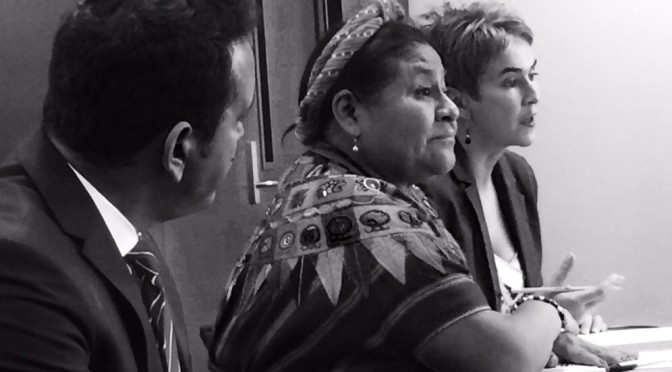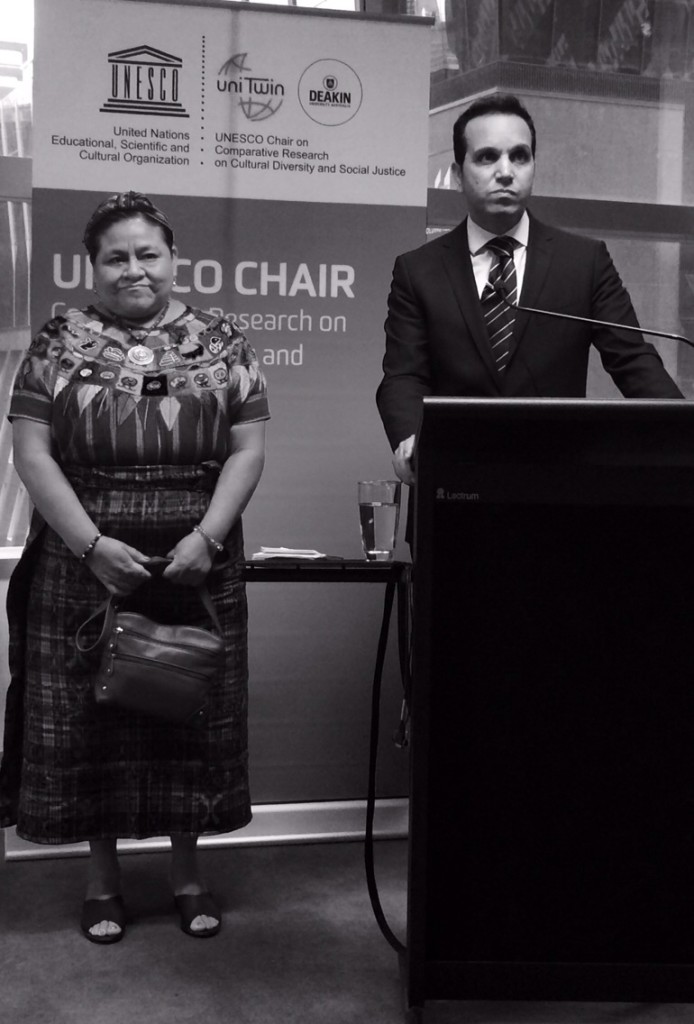Is it possible to explain the phenomenon of China in South America with the North American concept of “rise”?
In the context of plural international dynamics, the idea of “rise” can be replaced by the notion of “presence”, as a point of departure to elaborate explanations about China according to the South American context. Both rise and presence would be complementary dynamics carried out into what Amitav Acharya has called “a multiplex world”
It is not surprising realists and idealists have come to see ‘the rise of China’ as the most important international phenomenon addressed by the International Relations theory (IRT). This issue has been so far addressed as a concern from the North, being the axis of two intertwined debates: the end of the American world hegemony and the power race between the United States and China.
The phenomenon of China certainly leads to uncertainty in analysing strategic contexts or project national foreign policies. Peter Katzenstein has addressed this concern: “[c]hange can lead to a degree of individual and collective insecurity and a politics of threat and fear that elicits a political and intellectual response –simplification through the creation of misleading binaries. Conditions of uncertainty and change and the search for stability are thus politically closely linked”. (Katzenstein, 2012, p. 3)
In this sense, the most important intellectual response to the phenomenon of China given by North American IRT has been the binary use of the concept of rise and whether China will be a peaceful or un-peaceful world power. However, to what extent does this search for stability satisfies South American necessities related to particular changes produced by the presence of China in the region? Does the concept of “rise” addressed by IRT’s leading paradigms explain the relation between China and South American states?
What does it mean “rise” for the IRT?
The IRT has generally assumed the idea that “rise” means a race for international power. From this point of view, China would be only the last modern case of a tragic list in which other great powers have risen and fallen during the last four centuries. The concept implies a competition between powerful states –mostly Western ones- whose rivalry has global scope because it implies the possibility of military conflicts between them.
Paul Kennedy’s book “The Rise and Fall of the Great Powers” (Kennedy, 1988) was an important contribution to the understanding of “rise”, not because it was an original and assertive approach, but because it was a best seller that deeply addressed the concept at the end of the eighties, having considerable influence in the West and also on southern scholars who were up to date in Western intellectual trends during the post-Cold War years (Anthony Giddens, 1989).
Kennedy’s notion of “rise” involved the realist principle of international competence in Europe during the post-Renaissance period. According to him, “the warlike rivalries among its various kingdoms and city-states stimulated a constant search for military improvements, which interacted fruitfully with the newer technological and commercial advances that were also being thrown up in this competitive, entrepreneurial environment” (Kennedy, 1988, p. xvi). In this context, a little few years after Kennedy’s book, Kenneth Waltz described the emergence of the new structure in international politics after the Cold War as follows: “The behaviour of states, the patterns of their interactions, and the outcomes their interactions produced had been repeated again and again through the centuries despite profound changes in the internal composition of states […] States have continued to compete in economic, military, and other ways” (Waltz, 1993, p. 45).
It is worthwhile noticing that the IRT did not deeply address China as emerging power at the end of the Cold War and during the nineties. Instead, at that time the first concern was whether US had to face the return of European 19th century patterns of balance of power. Nevertheless, when the issue gained importance during the next decade, the main theoretical output provided by those previous debates consisted in realising that the interaction between US and China could lead a struggle for international power. Since then, the main theoretical dilemma has been whether China will be or not a peaceful emerging power, which is expressed in two leading theoretical approaches.
The first approach argues that China cannot rise peacefully, because powerful states are rarely satisfied with the distribution of power. Following the Waltz’s neorealist theory, John Mearsheimer argues that states want power because they have to protect themselves from each other, so despite knowing that powerful states control offensive military capabilities, it is impossible to know other states’ intentions (Mearsheimer, 2003). In this sense, states use their power to survive, ignoring culture, identity or types of regimes; while the first goal of using power is to pursue regional hegemony, the second one is to ensure that no rival great power controls another region (Mearsheimer, 2003, pp. 140-145).
The second approach argues that China will rise peacefully, because it “has powerful incentives to work with and integrate into the existing order”, which is centralised in US (Ikenberry, 2011, p. 249). This thesis has been proposed by John Ikenberry, who states that China will not proceed to rupture the international order because its capitalist economy depends on the international trade ruled by liberal institutions; moreover, China has engaged with the most important international organizations created by the American liberal order, such as the United Nations and the World Trade Organization. From this point of view, Ikenberry explains that if this argument was correct, the global system would retain political characteristics of a one-hub global system even as the distribution of material capabilities shifts in favour to China (Ikenberry, 2011).
Is “rise” the only way to explain China as international phenomenon?
In order to assess the theoretical meaning of rise to the case of China, what needs to be particularly emphasized is the fact that the Chinese phenomenon does not only mean a competition for global power, but also a new and unknown international actor. From this point of view, the relation between China and South America entails diverse dynamics which would reinforce a multiplex world instead of a sort of international monolith. The idea of “multiplex world” was proposed by Amitav Acharya. According to this author, it is “a world of diversity and complexity, a decentred architecture of order management, featuring old and new powers, with greater role for regional governance” (Acharya, 2014, p. 8); in the particular case of China, even if it “never becomes the leader power of the world, its rise would still fuel a desire and need for legitimizing and exporting its own values and institutions for domestic and international governance drawn from China’s own history and culture” (Acharya, 2014, p. 46).
In the context of the existence of diverse international dynamics, the idea of “rise” could be replaced by the notion of “presence” as a point of departure to elaborate explanations about China according to the South American context. From this point of view, both rise and presence would be complementary dynamics carried out in this multiplex world. There are some important reasons to argue this conceptual change.
First, rather than being a comprehensive approach to explain world powers’ behaviour, structural realist theory reflects an ethnocentric explanation about the US foreign policy towards Latin America since the Monroe Doctrine. Mearsheimer argues, for example, “[i]f China continues its striking economic growth over the next few decades; it is likely to act in accordance with the logic of offensive realism, which is to say it will attempt to imitate the United States” (Mearsheimer, 2003). The fact of assuming similar behaviours would entail serious risks for East Asian countries, particularly in terms of suffering future Chinese interventions. In this sense, some Asian states could be under Chinese threat in the future as Chile and Venezuela were threatened by Washington during the governments of Salvador Allende and Hugo Chavez, because if countries had a kind of anti-Chinese hegemony president, China’s intelligence agencies would promote a coup d’état.
Furthermore, although Mearsheimer’s theory could be correct in the future, China’s behaviour deeply differs from US today. For example, China does not have military alliances with states from South America, while the United States, in contrast, has military allies such as Japan, South Korea and Philippines. China does not carry out military exercises across the South Pacific either, while the United States recently accomplished the provocative Freedom of Navigation Operation (FONOP), at the South China Sea, increasing diplomatic tensions with China because of the “innocent passage” of the USS Lassen within China’s twelve nautical miles at the Subi Reef (Krejsa, 2015).
Second, the engagement between South America and China experienced since the 2000s coincided with the declining of US influence on South America under George W. Bush’s government. Such a decline was caused by several factors such as: (1) the failure of the Consensus of Washington’s policies in countries like Bolivia, Ecuador, Venezuela and Argentina, which in turn resulted in the rise of anti-neoliberal governments; (2) the general rejection against US invasion to Iraq in 2003; (3) and the rise of Brazil’s international influence under the presidency of Inacio Lula Da Silva.
The decline of US influence in South America in relation to China is because the latter neither recommends nor obligates other countries to follow universal values. So despite the existence of a China’s Policy to Latin America, there are flexible approaches to deploy Chinese foreign interests across the region. Thus, for example, China carries out strong free trade relations with Chile, while with Argentina accomplishes technological projects on atomic technologies. With Peru there are important investments on mining exploitation, and with Bolivia, China launched the first Bolivian Satellite (Chinese Government, 2008). The US policy towards the region in the past, in contrast, had been characterised by the promotion and imposition of “American” values and the establishment of regional institutional frameworks, such as the Organization of American States (OAS), the Consensus of Washington and the Free Trade Area of the Americas (FTAA).
Third, it is necessary to explore the possibility of finding out southern inter-subjectivities and southern agencies as expressions of a multiplex world. In this sense, it is undeniable that Ikenberry’s approach seems inclusive in terms of describing the international order as a system where every country participates in it, independently of power, geography, ethnicity, or political system; however, the same approach oversimplifies the multiplex logics of international relations around the world, entailing the risk of omitting the study of non-Western processes or South-South relations. It also excludes any possibility of studying whether some non-Western institutions, norms or behaviours can nest in this order. For example, the principle of non-intervention coined by South American countries, after decades of Washington interventions across the region, did not reinforce a one-hub system when countries rejected the Bush administration’s plan to invade Iraq in 2003. The Washington Consensus was also rejected by several South American countries after serious institutional crisis at the beginning of the last decade. Bolivia, Venezuela, Argentina and Ecuador experienced deep crisis after the neo-liberalization of their economies during the eighties and nineties, which in turn explained the emergence of anti-neoliberal governments. From this point of view, and given the China’s experience dealing with Western powers since the Wars of Opium, it would be likely to find more similar understandings about the principle of non-intervention between South America and China, than between these both and US.
Fourth, the emergence of China as international phenomenon must lead to realise its own particularities that are not necessarily understood according to the binary approaches provided by neo-realism and neo-liberalism. For example, in the case of realist paradigm the concepts of competence and anarchy could not have been theoretically legitimated without the European experience of disintegration in several nation-states since the Peace of Westphalia. The European disintegration and anarchy deeply differ from China’s experience, which legitimates unity and harmony as key concepts. Martin Jacques has pointed out this difference in his thesis about civilizational state: “Instead of seeing China through the prism of a conventional nation-state, we should think of it as a continental system containing many semi-autonomous provinces with distinctive political, economic and social systems” (Jacques, 2009, p. 203).
Conclusions
For South American countries, the rise of a new world superpower does not mean a radical change, because they have always been under the hegemony of external superpowers, such as Spain, the United Kingdom and the United States. The presence of China in South America, in contrast, implies an unprecedented experience of interacting with a non-Western power whose culture, identity, values and history deeply differ from the other Western powers.
The presence of China in South America reinforces dynamics for a more diverse world, rather than a homogeneous American-led liberal hegemonic order or a system where world powers are competing for surviving. Thus, the assumption of multiple dynamics related to China is a point of departure to explain this phenomenon according to the South American context.
Both rise and presence are elements of what Amitav Acharya has defined as a multiplex world. The complementarity of these concepts can ameliorate the state of uncertainty given by the fact that this the first time in our modern era that a non-Western state—which is also a civilizational state—is becoming a global international actor. In sum, this phenomenon entails a broad range of dynamics flowing in several directions, for example: from north to south, south to south, west to non-west, or non-west to non-west.
References
Acharya, A., 2014. The End of American World Order. 1st ed. Cambridge: Polity.
Anthony Giddens, M. M. a. I. W., 1989. Comments on Paul Kennedy’s the Rise and Fall of the Great Powers. The British Journal of Sociology, 40(2), pp. 328-340.
Chinese Government , 2008. Official Publications. [En línea]
Available at: http://www.gov.cn/english/official/2008-11/05/content_1140347.htm
[Último acceso: 27 November 2015].
Ikenberry, J., 2011. Liberal Sources of American Unipolarity. En: M. M. W. W. John Ikenberry, ed. International Relations Theory and The Consequences of Unipolarity. Cambridge: Cambridge University Press, pp. 216-251.
Jacques, M., 2009. When China Rules the World. New York: Penguin Press.
Katzenstein, P., 2012. China’s Rise: Rupture, return, or recombination?. En: P. Katzenstein, ed. Sinicization and The Rise of China. Civilizational processes beyond East and West. Milton Park, Abingdon, Oxon: Routledge, pp. 1-38.
Kennedy, P., 1988. The Rise and Fall of the Great Powers. Economic Change and Military Conflict from 1500 to 2000. 2nd ed. London: Unwin Hyman.
Krejsa, H., 2015. The National Interest. [En línea]
Available at: http://www.nationalinterest.org/feature/the-real-meaning-behind-americas-fonops-the-south-china-sea-14195
[Último acceso: 29 October 2015].
Mearsheimer, J., 2003. The Tragedy of Great Power Politics. Updated Edition ed. New York: Norton.
Nau, H., 2001. Why ‘The Rise and Fall of the Great Powers’ was wrong. Review of International Studies, Issue 27, pp. 579-592.
Reuters, 2015. Reuters. [En línea]
Available at: http://www.reuters.com/article/2015/10/23/us-china-corruption-idUSKCN0SH08I20151023#Up18EcepK9HhvcTP.97
[Último acceso: 16 November 2015].
Waltz, K. N., 1993. The Emerging Structure of International Politics. International Security, 18(2), pp. 44-79.
Claudio Coloma is with the School of International Studies, University of Santiago of Chile



